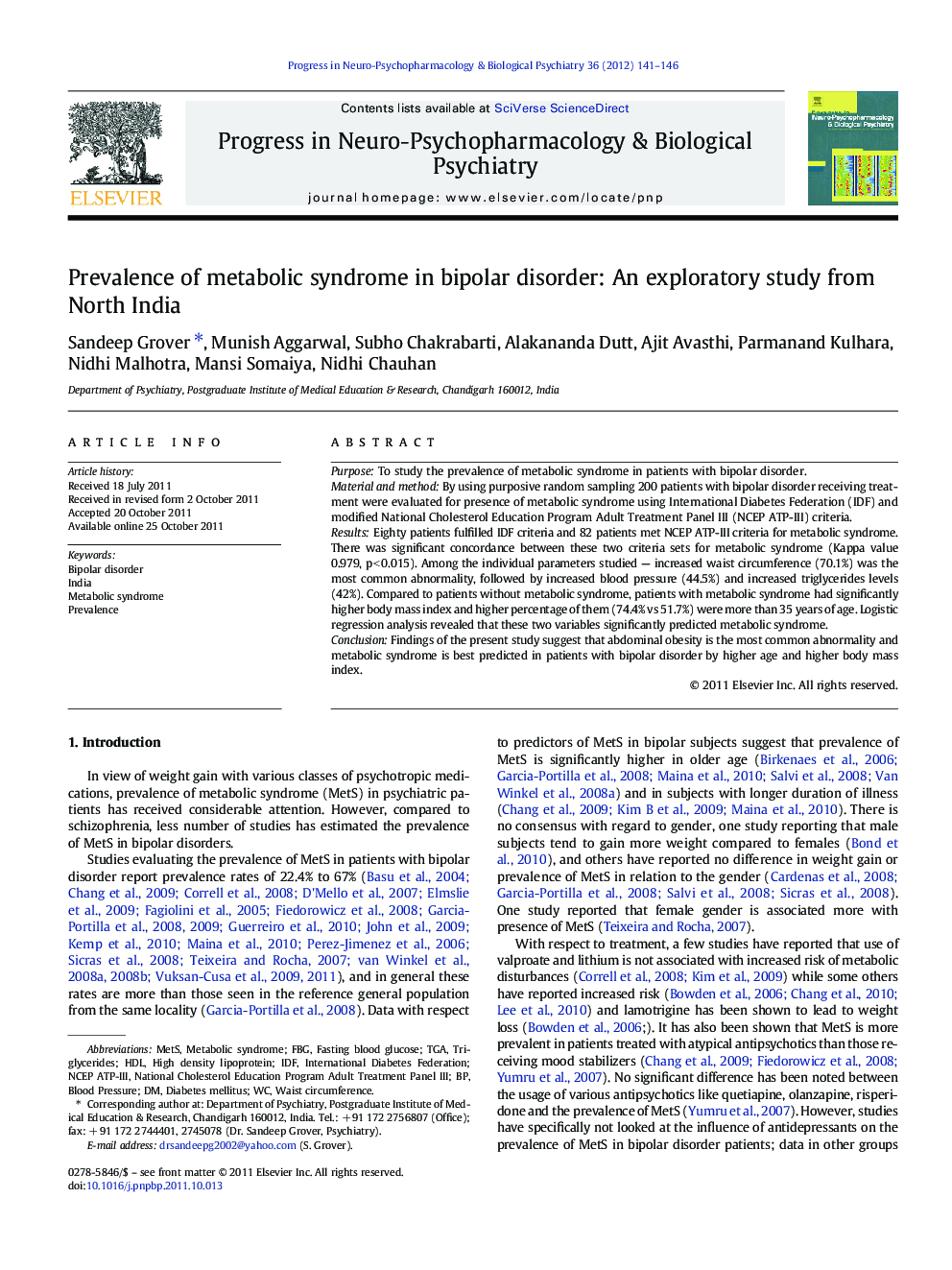| Article ID | Journal | Published Year | Pages | File Type |
|---|---|---|---|---|
| 5845422 | Progress in Neuro-Psychopharmacology and Biological Psychiatry | 2012 | 6 Pages |
PurposeTo study the prevalence of metabolic syndrome in patients with bipolar disorder.Material and methodBy using purposive random sampling 200 patients with bipolar disorder receiving treatment were evaluated for presence of metabolic syndrome using International Diabetes Federation (IDF) and modified National Cholesterol Education Program Adult Treatment Panel III (NCEP ATP-III) criteria.ResultsEighty patients fulfilled IDF criteria and 82 patients met NCEP ATP-III criteria for metabolic syndrome. There was significant concordance between these two criteria sets for metabolic syndrome (Kappa value 0.979, p < 0.015). Among the individual parameters studied - increased waist circumference (70.1%) was the most common abnormality, followed by increased blood pressure (44.5%) and increased triglycerides levels (42%). Compared to patients without metabolic syndrome, patients with metabolic syndrome had significantly higher body mass index and higher percentage of them (74.4% vs 51.7%) were more than 35 years of age. Logistic regression analysis revealed that these two variables significantly predicted metabolic syndrome.ConclusionFindings of the present study suggest that abdominal obesity is the most common abnormality and metabolic syndrome is best predicted in patients with bipolar disorder by higher age and higher body mass index.
⺠40-41% of BPAD patients have metabolic syndrome. ⺠Most common abnormality is increased waist circumference. ⺠Higher BMI and age > 35 years predicted metabolic syndrome in regression analysis.
